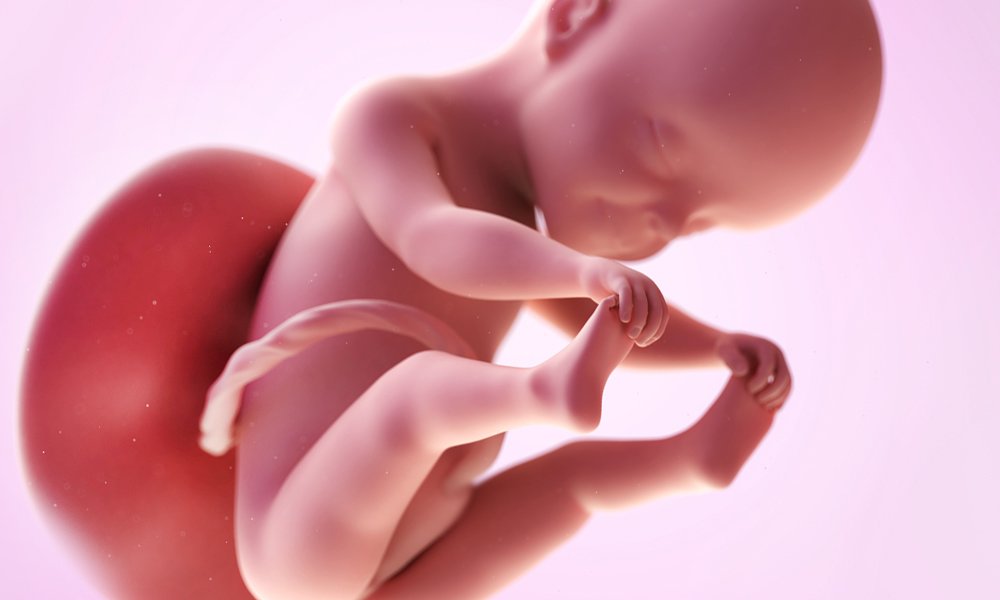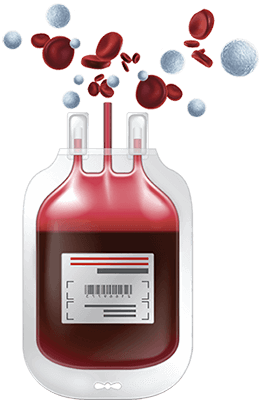Canada's Largest & Oldest Cord Blood Bank
The third trimester is quickly approaching and you will be meeting this baby soon!
This Week’s Highlights
Your baby is starting to practice breathing movements
Your baby’s startle reflexes are developing
You may need to take a glucose screening test
Your Baby at 25 Weeks
Your baby is the size of a rutabaga, measuring about 13.6 inches (34.6 centimeters) long and weighing in at about 1.5 pound (660 grams).

Baby Development at Week 25
Your baby is finally starting to put on fat and will soon start looking more like the chubby newborn you will be meeting.
The little ones senses are starting to develop. He or she can taste, hear and even smell now. The eyelids are starting to separate, but your baby will not open his or her eyes for sometime yet. Instead, your little one will learn to sense light through the eyelids.
Newly developing this week is the startle reflex. This means you may be able to feel your baby respond to a sudden loud noise with a kick or a punch.
Your baby is also practicing his or her breathing movements, getting ready for the outside world. The lungs are starting to produce surfactant, a substance that will help your little ones lungs expand with oxygen after birth.

Pregancy Tip
Put your second trimester energy to good use by stocking up your freezer with wholesome home cooked meals. You will be too busy and too tired with the new baby to cook. But, it is important to keep eating healthy, especially if you are breastfeeding.

Your Bump at 25 Weeks
Your adorable bump is starting to show more and more now. At this point, it probably resembles the size of a soccer ball.
How Your Body is Changing
Aside from your growing belly, vivid or scary dreams may be keeping you from sleeping at night. Vivid dreams are normal and they often play out subconscious fears you are harbouring about your impending motherhood. Try to get as much rest and sleep as possible before the baby arrives.
About 50% of expectant moms will also experience haemorrhoids at this stage of pregnancy. Hemorrhoids are caused by the uterus pressing down on to the blood vessels in the rectum causing them to bulge out. They are not dangerous, but can be painful and cause bleeding. Since constipation seem to aggravate hemorrhoids, increasing your fibre intake, staying hydrated, Kegel exercises and not straining too hard when you go can help.
Carpal tunnel or tingling, pain, burning and numbness in hands, fingers and wrists is another symptoms that affects about 60% of expectant moms, particularly those who work on a computer. It is caused by changes in circulation that affect your nerves. Talk to your healthcare provider about getting wrist braces that may help with symptoms.
Final item we want to add to second trimester associated aches and pains is sciatica, which is caused by the uterus putting pressure on the sciatic nerve. Ice packs and cold packs may help relieve pain. You may also talk to your healthcare provider about stretching exercises and over-the-counter pain medications.
The Glucose Tolerance Test
If you are at higher risk of gestational diabetes, your healthcare provider may ask you to take a glucose challenge test. The glucose challenge test determines how well your body responds to sugar (glucose) and is indicative of gestational diabetes risk.
About 6%-9% of expectant moms experience gestational diabetes. However, when detected it is easy to manage. You are at higher risk of gestational diabetes if you are obese, 35 years or older and have a history of diabetes in your family.
Stem Cells Could Provide an Effective Treatment for Type 1 Diabetes
Type 1 diabetes is a form of diabetes in which a person’s pancreas is no longer able to produce enough insulin. Insulin regulates metabolism of sugars and fats by stimulating absorption of glucose from the blood and promoting energy storage. The loss of insulin production is due to the body’s own immune system attacking and destroying the cells in the pancreas that produce insulin, known as beta cells.
A study published in the prestigious scientific journal Cell shows that human stem cells can be induced to form insulin-producing beta cells, which could then be implanted and regulate blood sugar levels. Read More →
How Far Along are You?
25 weeks in, 15 weeks to go! You are more than halfway hrough your pregnancy. Even though pregnancy is measured in weeks this means you are completing your sixth month of pregnancy.
Exercise at Week 25
As your belly grows bigger, this may be a good time to modify your exercise routine. This may help with the new aches and pains you are experiencing. Exercise has many benefits during pregnancy, from getting you ready for labor and birth, to increasing the circulation to you and your baby. Just don’t forget to keep in mind the following guidelines set by the American College of Obstetricians and Gynacologists (ACOG) when exercising while pregnant.
- Include a warm-up and a cool down
- Keep your workout to 30 minutes
- Avoid movements that require sudden jerking, bouncing or quick changes in position
- Use good posture to avoid straining your abdominal and lower-back muscles
- Drink plenty of water and make sure you avoid overheating

Pregnancy Symptoms at Week 25
Sciatica – Are you experiencing radiating pain along your hip and lower back? Sciatica is caused by the uterus putting pressure on the sciatic nerve, which extends from your lower back and down the legs. Stretching exercises, a cold pack and when necessary an over-the-counter pain relieve can help manage your sciatica. You will want to contact your healthcare provider if you experience any numbness in your feet or legs.
Carpal tunnel – If you notice pain, burning, numbness or tingling in your wrists, hands or fingers, you may have carpal tunnel syndrome. Carpal tunnel often affects moms who engage in activities that require repetitive motion such as sewing and typing. Swelling of joints associated with pregnancy and sluggish circulation are behind this pregnancy symptom. You may also notice that these symptoms worsen at night-time. Frequent stretching, investing in an ergonomic keyboard, wearing a wrist brace and acupuncture may be useful for relieving symptoms.
Restless leg syndrome– This is a pregnancy symptom experienced by approximately 15% of moms to be that may keep you up all night. Restless leg syndrome is characterized by uncomfortable tingling or creeping and crawling felt in your feet and legs that makes you want to move them. Genetics, hormonal changes and even certain types of foods may be behind why you experience restless leg syndrome. If you experience an episode while you are trying to get to sleep, you may want to try walking around for a bit since movement can help relieve symptoms. Acupuncture and a hot pad can also be useful. You may want to keeping track of your food intake to see if certain foods are responsible for triggering an episode.
Vivid dreams – Strange dreams are a normal part of pregnancy. They may be due to hormones or your fears and anxieties about the upcoming big change.
6 Easy Steps to Bank Cord Blood
Cord blood is the blood remaining in the umbilical cord and placenta after birth. It contains rare stem cells that have many potential medical applications.
We have put together a fantastic webinar that will introduce you to cord blood and everything you need to know about it.



